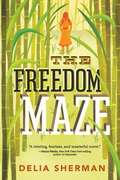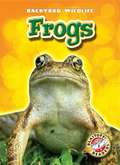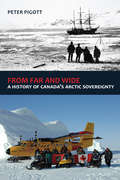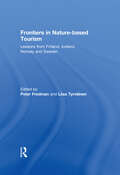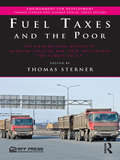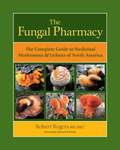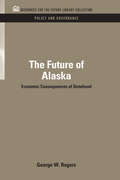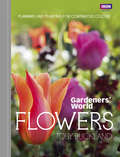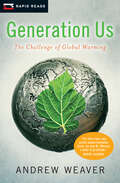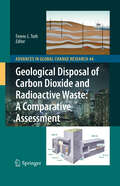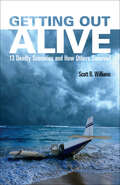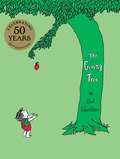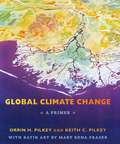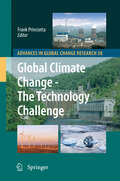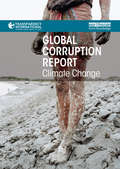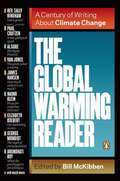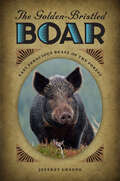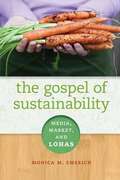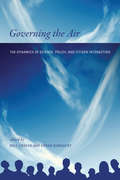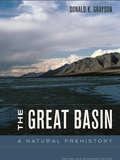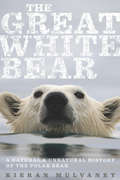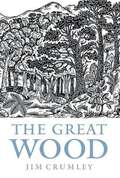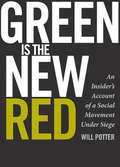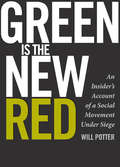- Table View
- List View
The Freedom Maze
by Delia ShermanThirteen-year-old Sophie isn’t happy about spending the summer of 1960 at her grandmother’s old house in the bayou. Bored and lonely, she can’t resist exploring the house’s maze, or making an impulsive wish for a fantasy-book adventure with herself as the heroine. What she gets instead is a real adventure: a trip back in time to 1860 and the race-haunted world of her family’s Louisiana sugar plantation. Here, President Lincoln’s Emancipation Proclamation is still two years in the future and passage of the Thirteenth Amendment is almost four years away. And here, Sophie is mistaken, by her own ancestors, for a slave.
Frogs
by Emily GreenFrogs are powerful jumpers. They have been known to leap distances over 30 feet! Young learners will discover the physical characteristics of frogs, where they live, and what they eat to get the energy to leap.
From Far and Wide: A History of Canada's Arctic Sovereignty
by Peter PigottIn the early 20th century the Canadian North was a mystery, but the Canadian military stepped in, and this book explores its historic activities in Canada’s Arctic. Is the Canadian North a state of mind or simply the lands and waters above the 60th parallel? In searching for the ill-fated Franklin Expedition in the 19th century, Britain’s Royal Navy mapped and charted most of the Arctic Archipelago. In 1874 Canadian Prime Minister Alexander Mackenzie agreed to take up sovereignty of all the Arctic, if only to keep the United States and Tsarist Russia out. But as the dominion expanded east and west, the North was forgotten. Besides a few industries, its potential was unknown. It was as one Canadian said for later. There wasn’t much need to send police or military expeditions to the North. Not only was there little tribal warfare between the Inuit or First Nations, but there were few white settlers to protect and the forts were mainly trading posts. Thus, in the early 20th century, Canada’s Arctic was less known than Sudan or South Africa. From Far and Wide recounts exclusively the historic activities of the Canadian military in Canada’s North.
Frontiers in Nature-based Tourism: Lessons from Finland, Iceland, Norway and Sweden
by Peter Fredman Liisa TyrväinenNature has been a key attraction factor for tourism in the Nordic countries for decades. The demand for nature-based tourism has steadily grown and is one of the most rapidly expanding sectors within tourism across Europe and elsewhere. This demand has created opportunities for nature-based tourism to develop as an economic diversification tool within regions rich in natural amenities. But nature-based tourism is not only about tourism businesses and tourists visiting nature. The natural environment as a basis for tourism involves many challenges related to local communities, public access, nature protection and the management of natural resources.This book covers a broad set of topics in contemporary nature-based tourism from Finland, Iceland, Norway and Sweden. Areas discussed are innovation, fishing rights and supply of angling, recreation experience preferences, national park attractions, the cultural clash between established outdoor recreational use and new tourism activities, the Right of Public Access as opportunity and obstacle, preferences of tourism landscapes, controversies around wilderness development, management of hiking trails, eco-tourism certification, and financing of recreational infrastructure.This book was published as a special issue of the Scandinavian Journal of Hospitality and Tourism.
Fuel Taxes and the Poor: The Distributional Effects of Gasoline Taxation and Their Implications for Climate Policy (Environment For Development Ser.)
by Thomas SternerFuel Taxes and the Poor challenges the conventional wisdom that gasoline taxation, an important and much-debated instrument of climate policy, has a disproportionately detrimental effect on poor people. Increased fuel taxes carry the potential to mitigate carbon emissions, reduce congestion, and improve local urban environment. As such, higher gasoline taxes could prove to be a fundamental part of any climate action plan. However, they have been resisted by powerful lobbies that have persuaded people that increased fuel taxation would be regressive. Reporting on examples of over two dozen countries, this book sets out to empirically investigate this claim. The authors conclude that while there may be some slight regressivity in some high-income countries, as a general rule, fuel taxation is a progressive policy particularly in low income countries. Rich countries can correct for regressivity by cutting back on other taxes that adversely affect poor people, or by spending more money on services for the poor. Meanwhile, in low-income countries, poor people spend a very small share of their money on fuel for transport. Some costs from fuel taxes may be passed on to poor people through more expensive public transportation and food transport. Nevertheless, in general the authors find that gasoline taxes become more progressive as the income of the country in question decreases. This book provides strong arguments for the proponents of environmental taxation. It has immediate policy implications at the intersection of multiple subject areas, including transportation, environmental regulation, development studies, and climate change. Published with Environment for Development initiative.
The Fungal Pharmacy
by Robert Rogers Solomon P. WasserIn The Fungal Pharmacy, noted herbalist Robert Rogers introduces readers to more than 300 species of medicinal mushrooms and lichens found in North America. These fungi, Rogers explains, have the capacity to heal both the body and, through the process of myco-remediation, the planet itself. Throughout the book, he documents their success in optimizing the immune system and treating a wide range of acute and chronic diseases, including cardiovascular, respiratory, and liver problems, blood sugar disorders, cancer, and obesity.Entries discuss the mushroom or lichen's medicinal traits and properties, including active chemical components, preparation methods (including extracts, essences, and essential oils), and historical as well as modern-day usage. Two hundred full-color photos and thorough descriptions make identification easy for the reader. Rogers also delves into the cultural, religious, and literary significance of each mushroom, featuring fascinating tidbits about each one's etymology and history.
The Future of Alaska: Economic Consequences of Statehood (RFF Policy and Governance Set)
by George RogersThis book is both a discussion of key decisions Alaskans must make in coming years and a case study of problems of public finance and policy that accompany shifts in power. Originally published in 1962
Future Science Opportunities in Antarctica and the Southern Ocean
by Committee on Future Science Opportunities in Antarctica the Southern OceanAntarctica and the surrounding Southern Ocean remains one of the world's last frontiers. Covering nearly 14 million km² (an area approximately 1. 4 times the size of the United States), Antarctica is the coldest, driest, highest, and windiest continent on Earth. While it is challenging to live and work in this extreme environment, this region offers many opportunities for scientific research. Ever since the first humans set foot on Antarctica a little more than a century ago, the discoveries made there have advanced our scientific knowledge of the region, the world, and the Universe--but there is still much more to learn. However, conducting scientific research in the harsh environmental conditions of Antarctica is profoundly challenging. Substantial resources are needed to establish and maintain the infrastructure needed to provide heat, light, transportation, and drinking water, while at the same time minimizing pollution of the environment and ensuring the safety of researchers. "Future Science Opportunities in Antarctica and the Southern Ocean" suggests actions for the United States to achieve success for the next generation of Antarctic and Southern Ocean science. The report highlights important areas of research by encapsulating each into a single, overarching question. The questions fall into two broad themes: (1) those related to global change, and (2) those related to fundamental discoveries. In addition, the report identified key science questions that will drive research in Antarctica and the Southern Ocean in coming decades, and highlighted opportunities to be leveraged to sustain and improve the U. S. research efforts in the region.
Gardeners' World: Planning and Planting for Continuous Colour
by Toby BucklandOver two years the professionals at Gardeners' World created a series of beautiful flower gardens from a disused playing field in Birmingham. Here Toby Buckland reveals how you can adopt the tried and tested methods used at Gardeners' World to create your own year-round flower garden in this beautifully illustrated guide to the flower gardens at Greenacre.Split into achievable front and back garden plots, the Greenacre gardens accommodate a range of garden designs, aspects and plant-types, from a luscious twilight garden for evening scent and nectar-filled bee border to attract beneficial wildlife, to a hardy coastal garden to show what you can do with very dry soil. Toby talks through the concept, planting and maintenance requirements of each garden, describing every flower in full and assessing the environmental benefits of each one. And he expertly demonstrates how to make bespoke garden features, such as cobble paths and bee boxes.Filled with stunning flower photography and expert garden advice, this inspirational and practical book is the culmination of two years of gardening at Greenacre and enables lovers of flowers to bring a little of the Gardeners' World magic to their own gardens.
Generation Us: The Challenge of Global Warming (Rapid Reads)
by Dr. Andrew J. WeaverIn clear and accessible language, Generation Us explains the phenomenon of global warming, outlines the threat it presents to future generations and offers a path toward solutions to the problem. The reality of global warming has long been accepted within the scientific community, yet it remains a hotly debated topic at the political and social level. Why is this? Is it the fact that the ultimate effects of global warming will not be felt in our lifetimes? Do we really feel no moral responsibility for future generations? Dr. Weaver, one of the world's leading experts in the field, contends that, just as humans have been responsible for creating the problem of global warming, we must also be the solution.
Geological Disposal of Carbon Dioxide and Radioactive Waste: A Comparative Assessment
by Ferenc L. TothFossil fuels will remain the backbone of the global energy economy for the foreseeable future. The contribution of nuclear energy to the global energy supply is also expected to increase. With the pressing need to mitigate climate change and reduce greenhouse gas emissions, the fossil energy industry is exploring the possibility of carbon dioxide disposal in geological media. Geological disposal has been studied for decades by the nuclear industry with a view to ensuring the safe containment of its wastes. Geological disposal of carbon dioxide and that of radioactive waste gives rise to many common concerns in domains ranging from geology to public acceptance. In this respect, comparative assessments reveal many similarities, ranging from the transformation of the geological environment and safety and monitoring concerns to regulatory, liability and public acceptance issues. However, there are profound differences on a broad range of issues as well, such as the quantities and hazardous features of the materials to be disposed of, the characteristics of the targeted geological media, the site engineering technologies involved and the timescales required for safe containment at the disposal location. There are ample opportunities to learn from comparisons and to derive insights that will assist policymakers responsible for national energy strategies and international climate policies.
Getting Out Alive: 13 Deadly Scenarios and How Others Survived
by Scott B. WilliamsIN THE BLINK OF AN EYE, WITHOUT WARNING, DISASTER STRIKES!WOULD YOU SURVIVE? Stranded in the wild Pinned under a boulder Marooned on an island Trapped in a burning high rise Mauled by a bear Snowbound in your car Surrounded by a forest fire And many more ultimate challengesEvery year, ordinary people find themselves in extraordinary life-or-death situations. Delving into 13 harrowing scenarios, this handbook for survival combines riveting narratives with expert advice and real-life accounts of savvy survivors. It's everything you need to know to get out alive.
The Giving Tree
by Shel SilversteinAs The Giving Tree turns fifty, this timeless classic is available for the first time ever in ebook format. This digital edition allows young readers and lifelong fans to continue the legacy and love of a classic that will now reach an even wider audience."Once there was a tree...and she loved a little boy."So begins a story of unforgettable perception, beautifully written and illustrated by the gifted and versatile Shel Silverstein. This moving parable for all ages offers a touching interpretation of the gift of giving and a serene acceptance of another's capacity to love in return.Every day the boy would come to the tree to eat her apples, swing from her branches, or slide down her trunk...and the tree was happy. But as the boy grew older he began to want more from the tree, and the tree gave and gave and gave. This is a tender story, touched with sadness, aglow with consolation.Shel Silverstein's incomparable career as a bestselling children's book author and illustrator began with Lafcadio, the Lion Who Shot Back. He is also the creator of picture books including A Giraffe and a Half, Who Wants a Cheap Rhinoceros?, The Missing Piece, The Missing Piece Meets the Big O, and the perennial favorite The Giving Tree, and of classic poetry collections such as Where the Sidewalk Ends, A Light in the Attic, Falling Up, Every Thing On It, Don't Bump the Glump!, and Runny Babbit.And don't miss the other Shel Silverstein ebooks, Where the Sidewalk Ends and A Light in the Attic!
Global Climate Change: A Primer
by Orrin H. Pilkey Keith C. PilkeyAn internationally recognized expert on the geology of barrier islands, Orrin H. Pilkey is one of the rare academics who engages in public advocacy about science-related issues. He has written dozens of books and articles explaining coastal processes to lay readers, and he is a frequent and outspoken interviewee in the mainstream media. Here, the colorful scientist takes on climate change deniers in an outstanding and much-needed primer on the science of global change and its effects. After explaining the greenhouse effect, Pilkey, writing with son Keith, turns to the damage it is causing: sea level rise, ocean acidification, glacier and sea ice melting, changing habitats, desertification, and the threats to animals, humans, coral reefs, marshes, and mangroves. These explanations are accompanied by Mary Edna Fraser's stunning batiks depicting the large-scale arenas in which climate change plays out. The Pilkeys directly confront and rebut arguments typically advanced by global change deniers. Particularly valuable are their discussions of "Climategate," a manufactured scandal that undermined respect for the scientific community, and the denial campaigns by the fossil fuel industry, which they compare to the tactics used by the tobacco companies a generation ago to obfuscate findings on the harm caused by cigarettes.
Global Climate Change - The Technology Challenge
by Frank PrinciottaIn order to avoid the potentially catastrophic impacts of global warming, the current 3% CO2 global emission growth rate must be transformed to a 1 to 3% declining rate, as soon as possible. This will require a rapid and radical transformation of the world's energy production and end use systems. The current generation of energy technologies are not capable of achieving the level of mitigation required. Next generations of renewable, low carbon generation and end use technologies will be needed. This book quantifies the mitigation challenge. It then considers the status of key technologies needed to protect the planet from serious climate change impact. Current and emerging technologies are characterized for their mitigation potential, status of development and potential environmental impacts. Power generation, mobile sources, industrial and building sectors are evaluated in detail. The importance and unique challenges for rapidly developing countries, such as China and India are discussed. Current global research and development efforts for key technologies are discussed. It is concluded that it will be necessary to substantially upgrade and accelerate the current worldwide RDD&D effort on both emerging energy technologies and those enabling technologies needed to improve mitigation effectiveness and economics. It will also be necessary to carefully evaluate the potential environmental characteristics of next generation technologies to avoid unacceptable health and ecological impacts. Finally, given the monumental technological challenge associated with transforming the world's energy system, geoengineering options are evaluated, since if successfully deployed, they have the potential to allow more time for the necessary energy system transformation. 'This book on Climate Change not only gives a clear picture of the problem but suggests many of the pitfalls in solving it and recommends strongly, a research program to fill the gaps in our knowledge. It is a most useful reference book for all aspects of the problem.' William D. Ruckelshaus, Madrona Venture Group/Evergreen Venture
Global Corruption Report: Climate Change
by Transparency InternationalThe global response to climate change will demand unprecedented international cooperation, deep economic transformation and resource transfers at a significant scale. Corruption threatens to jeopardise these efforts. Transparency International's Global Corruption Report: Climate Change is the first publication to comprehensively explore such corruption risks. More than fifty leading experts and practitioners contribute, covering four key areas: governance: investigating major governance challenges towards tackling climate change mitigating climate change: reducing greenhouse gas emissions with transparency and accountability adapting to climate change: identifying corruption risks in climate-proofing development, financing and implementation of adaptation forestry governance: responding to the corruption challenges plaguing the forestry sector, and how these challenges need to be integrated into current international strategies to halt deforestation and promote reforestation. The Global Corruption Report: Climate Change provides essential policy analysis to help policy-makers, practitioners and other stakeholders understand these risks and develop effective responses at a critical point in time when the main architecture for climate governance is being developed.
The Global Warming Reader: A Century of Writing About Climate Change
by Bill MckibbenOur most widely respected environmental writer brings together the essential voices on global warming, from its 19th-century discovery to the present. With the rise of extreme weather events worldwide--witness the devastation wrought by Hurricanes Sandy, Irene, and Katrina, and the sustained drought across the American West--global warming has become increasingly difficult to deny. What is happening to our planet? And what can we do about it? The Global Warming Reader provides more than thirty-five answers to these burning questions, from more than one hundred years of engagement with the topic. Here is Elizabeth Kolbert's groundbreaking essay "The Darkening Sea," Michael Crichton's skeptical view of climate change, George Monbiot's biting indictment of those who are really using up the planet's resources, NASA scientist James Hansen's testimony before the U. S. Congress, and clarion calls for action by Al Gore, Arundhati Roy, Naomi Klein, and many others. The Global Warming Reader is a comprehensive resource, expertly edited by someone who lives and breathes this defining issue of our time.
The Golden-Bristled Boar: Last Ferocious Beast of the Forest
by Jeffrey GreeneThe wild boar appears to us as something straight out of a myth. But as Jeffrey Greene learned, these creatures are very real, living by night and, despite shrinking habitats and hordes of hunters, thriving on six continents. Greene purchased an eighteenth-century presbytery in a region of ponds and forests in northern Burgundy between the Loire and Seine Rivers of France. He soon discovered he’d moved to one of the most densely populated boar areas in Europe. Following the gift of a side of boar from a neighbor, and a dramatic early-morning encounter with a boar-hunting party and its prey, Greene became fascinated with the animal and immersed himself in the legend and the reality of the wild boar. Although it has no natural enemies, the boar is in constant conflict with humans. Most societies consider it a pest, not only wreaking havoc on crops and livestock, but destroying golf-course greens in search of worms, even creating a hazard for drivers (hogs on the roads cause over 14,000 car accidents a year in France). It has also been the object of highly ritualized hunts, dating back to classical times.The animal’s remarkable appearance--it can grow larger than a person, and the males sport prominent tusks, called "whetters" and "cutters"--has inspired artists for centuries; its depictions range from primitive masks to works of high art such as Pietro Tacca’s Porcellino and paintings by Velázquez and Frans Snyders. The boar also plays a unique role in myth, appearing in the stories of Hercules and Adonis as well as in the folktale Beauty and the Beast.The author’s search for the elusive animal takes him to Sardinia, Corsica, and Tuscany; he even casts an eye to the American South, where he explores the boar’s feral-pig counterparts and descendents. He introduces us to a fascinating cast of experts, from museum curators and scientists to hunters and chefs (who share their recipes) to the inhabitants of chateaux who have lived in the same ancient countryside with generations of boars. They are all part of a journey filled with wonders and discoveries about these majestic animals the poet Robinson Jeffers called "beautiful monsters."
The Gospel of Sustainability: Media, Market and LOHAS
by Monica M. EmerichFrom organic produce and clothing to socially conscious investing and eco-tourism, the lifestyles of health and sustainability, or LOHAS, movement encompasses diverse products and practices intended to contribute to a more sustainable lifestyle for people and the planet. In The Gospel of Sustainability, Monica M. Emerich explores the contemporary spiritual expression of this green cultural shift at the confluence of the media and the market. This is the first book to qualitatively study the LOHAS marketplace and the development of a discourse of sustainability of the self and the social and natural worlds. Emerich draws on myriad sources related to the notions of mindful consumption found throughout the LOHAS marketplace, including not just products and services but marketing materials, events, lectures, regulatory policies, and conversations with leaders and consumers. These disparate texts, she argues, universally project a spiritual message about personal and planetary health that is in turn reforming capitalism by making consumers more conscious.
Governing the Air: The Dynamics of Science, Policy, and Citizen Interaction (Politics, Science, and the Environment)
by Rolf Lidskog Goran SundqvistExperts offer theoretical and empirical analyses that view the regulation of transboundary air pollution as a dynamic process.Governing the Air looks at the regulation of air pollution not as a static procedure of enactment and agreement but as a dynamic process that reflects the shifting interrelationships of science, policy, and citizens. Taking transboundary air pollution in Europe as its empirical focus, the book not only assesses the particular regulation strategies that have evolved to govern European air, but also offers theoretical insights into dynamics of social order, political negotiation, and scientific practices. These dynamics are of pivotal concern today, in light of emerging international governance problems related to climate change. The contributors, all prominent social scientists specializing in international environmental governance, review earlier findings, analyze the current situation, and discuss future directions for both empirical and theoretical work.The chapters discuss the institutional dimensions of international efforts to combat air pollution, examining the effectiveness of CLRTAP (Convention for Long-Range Transboundary Air Pollution) and the political complexity of the European Union; offer a broad overview and detailed case studies of the roles of science, expertise, and learning; and examine the “missing link” in air pollution policies: citizen involvement.Changing political conditions, evolving scientific knowledge, and the need for citizen engagement offer significant challenges for air pollution policy making. By focusing on process rather than product, learning rather than knowledge, and strategies rather than interests, this book gives a nuanced view of how air pollution is made governable.
The Great Basin: A Natural Prehistory (Revised and Expanded Edition)
by Donald K. GraysonCovering a large swath of the American West, the Great Basin, centered in Nevada and including parts of California, Utah, and Oregon, is named for the unusual fact that none of its rivers or streams flow into the sea. This fascinating illustrated journey through deep time is the definitive environmental and human history of this beautiful and little traveled region, home to Death Valley, the Great Salt Lake, Lake Tahoe, and the Bonneville Salt Flats. Donald K. Grayson synthesizes what we now know about the past 25,000 years in the Great Basin--its climate, lakes, glaciers, plants, animals, and peoples--based on information gleaned from the region's exquisite natural archives in such repositories as lake cores, packrat middens, tree rings, and archaeological sites. A perfect guide for students, scholars, travelers, and general readers alike, the book weaves together history, archaeology, botany, geology, biogeography, and other disciplines into one compelling panorama across a truly unique American landscape.
The Great White Bear: A Natural and Unnatural History of the Polar Bear
by Kieran MulvaneyPolar bears are creatures of paradox: They are white bears whose skin is black; massive predators who can walk almost silently; Arctic residents whose major problem is not staying warm, but keeping cool. Fully grown they can measure 10 feet and weigh close to 2,000 pounds, but at birth they are just 20 ounces. Creatures that may wander thousands of miles over the course of a year, they begin life in a snowdrift. Human encounters with these legendary beasts are cause for both excitement and apprehension. Tales throughout history describe the ferocity of polar bear attacks on humans; but human hunting of polar bears has exacted a far larger toll, obliging Arctic nations to try to protect their region's iconic species before it's too late. Now, however, another threat to the polar bears' survival has emerged, one that is steadily removing sea ice and the life it supports. Without this habitat, polar bears cannot exist. The Great White Bear celebrates the story of this unique species. Through a blend of history, both natural and human, through myth and reality and observations both personal and scientific, Kieran Mulvaney masterfully provides a context for readers to consider the polar bear, its history, its life, and its uncertain fate.
The Great Wood: The Ancient Forest Of Caledon
by Jim Crumley&“Tackles the legend of the . . . forest said to have once stretched from coast to coast and to have covered much of the Scottish uplands and Highlands.&” —The Herald The Great Wood of Caledon—the historic native forest of Highland Scotland—has a reputation as potent and misleading as the wolves that ruled it. The popular image is of an impassable, sun-snuffing shroud, a Highlandswide jungle infested by wolf, lynx, bear, beaver, wild white cattle, wild boar, and wilder painted men. Jim Crumley shines a light into the darker corners of the Great Wood, to re-evaluate some of the questionable elements of its reputation, and to assess the possibilities of its partial resurrection into something like a national forest. The book threads a path among relict strongholds of native woodland, beginning with a soliloquy by the Fortingall Yew, the one tree in Scotland that can say of the hey-day of the Great Wood 5,000 years ago: &“I was there.&” The journey is enriched by vivid wildlife encounters, a passionate and poetic account that binds the slow dereliction of the past to an optimistic future.&“Crumley&’s greatest talent lies in his ability to convey genuine sympathy for the wildlife he observes, and a somehow calming sense that, however much mankind might like to think itself above all that, we&’re really all just part and parcel of the same continuum . . . A great antidote to modern life.&” —Daily Record&“An engaging read.&” —BBC Wildlife Magazine&“Crumley gives unique insight into the rich history of this land.&” —Scottish Field
Green Is the New Red: An Insider's Account of a Social Movement Under Siege
by Will PotterAn insider tells how environmentalists and animal rights activists have become "the number one domestic terrorism threat."
Green Is the New Red
by Will PotterAt a time when everyone is going green, most people are unaware that the FBI is using anti-terrorism resources to target environmentalists. Here is a guided tour into an underground world of radical activism and an introduction to the shadowy figures behind the headlines. But here also is the story of how everyday people are prevented from speaking up for what they believe in. Like the Red Scare, this "Green Scare" is about fear and intimidation, and Will Potter outlines the political, legal, and public relations strategies that threaten even acts of nonviolent civil disobedience with the label of "eco-terrorism."
